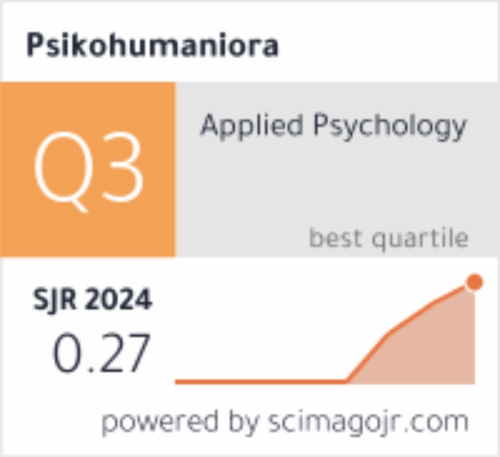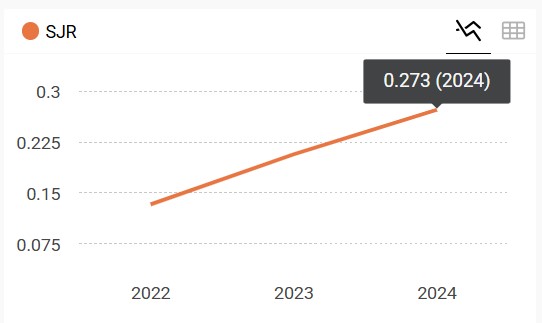Penyusunan dan Pengembangan Alat Ukur Employee Engagement
DOI:
https://doi.org/10.21580/pjpp.v1i1.958Keywords:
construct validity, content validity, employee engagement, Utretch Work Engagement Scale (UWES)Abstract
Abstract: This research was aimed to develop an instrument which can measure employee engagement score, which is based on Schaufeli’s theoretical framework. The previous instrument which was called Utretch Work Engagement Scale (UWES) was developed using content and construct validity. The content validity test was done by assessing some experts and using Aiken’s V, while construct validity was proved by item total correlation and factor analysis. Content validity test was conducted by getting input from fifteen experts in Psychology to evaluate the contents of 32 items. The Aiken’s V was used to evaluate the coefficient of each items (in which good range was from 0,645 to 0,98). The overall internal consistency was assessed using Cronbach alpha which showed the coefficient of reliability of 0,934 after deleting the items below 0,4, whereby leaving only 22 items for conducting the construct validity. Confirmatory factor analysis was done using factor analysis. 135 staffs in one of Plantation Company in Balikpapan were participated in this study. The confirmatory factor analyses produced a cross loading factors between three aspects of employee engagement which after confirming back to blueprint remaining only 8 items, which is distributed into 4 items for vigor, 2 items each for dedication and absorption.
Abstrak: Penelitian ini bertujuan untuk mengembangkan instrumen yang dapat mengukur skor employee engagement yang didasarkan pada kerangka teoritis yang dikemukakan oleh Schaufeli. Instrumen sebelumnya dikenal dengan Utretch Work Engagement Scale (UWES) yang dikembangkan dengan menggunakan validitas isi dan konstrak. Validitas isi diuji melalui judgment dari para ahli di bidang Psikologi dan menggunakan Aiken’s V, sedangkan validitas konstrak dibuktikan dengan korelasi item-total dan analisis faktor. Validitas isi diperoleh dari 15 orang yang ahli di bidang Psikologi untuk mengevaluasi isi dari 32 item. Aiken’s V digunakan untuk mengevaluasi koefisien dari setiap item (range yang baik berada di rentang 0,645 sampai 0,98). Konsistensi internal diperoleh melalui alpha Cronbach dengan koefisien reliabilitas sebesar 0,934 setelah item-item yang memiliki nilai di bawah 0,4 dikeluarkan. Total item yang tersisa berjumlah 22 item untuk kemudian dilakukan uji validitas konstrak. Confirmatory factor analysis dilakukan melalui analisis factor. Sebanyak 135 staf di salah satu Perusahaan Plantation di Balikpapan berpartisipasi dalam penelitian ini. Hasil analisis factor menunjukkan adanya factor yang saling tumpang tindih antara ketiga aspek dari employee engagement, yang setelah dikonfirmasi kembali ke blueprint menyisakan sebanyak 8 item, 4 item untuk aspek vigor, 2 item masing-masing untuk aspek dedication dan absorption.
Downloads
References
Abraham, S. (2012). Development of employee engagement programme on the basis of employee satisfaction survey. Journal of Economic Development, Management, IT, Finance and Marketing, 4(1), 27-37.
Azwar, S. (2012). Penyusunan skala psikologi (Edisi 2). Yogyakarta: Pustaka Pelajar.
Bakker, A. B., & Leiter M. P. (2010). Work engagement: A handbook of essential theory and research. New York: Psychology Press.
Bates, S. (2004). Getting engaged. Diakses dari http://www.shrm.org/Publications/ hrmagazine/EditorialContent/Pages/0204covstory.aspx tanggal 10 November 2014.
Baumruk, R. (2004). The missing link: The role of employee engagement in business success. Workspan, 47(11), 48-52.
Bowles, D., & Cooper, C. (2009). Employee morale: Driving performance in challenging times. Basingstoke: Palgrave Macmillan.
Cook, S. (2008). The essential guide to employee engagement: Better business performance through staff satisfaction. London, UK: Kogan Page.
Costello, A. B., & Osborne, J. (2005). Best practices in exploratory factor analysis: Four recommendations for getting the most from your analysis. Practical Assessment Research & Evaluation, 10(7). Diakses dari: http://pareonline.net/getvn.asp?v= 10&n=7 tanggal 20 Desember 2014.
Endres, G. M., & Smoak, L. M. (2008). The human resource craze: Human performance improvement and employee engagement. Organization Development Journal, 26.
Gregory, R. J. (2007). Psychological testing: History, principles, and applications (5th Ed.). New York: Pearson Education Group, Inc.
Harter, J. K., Schmidt, F. L., & Hayes, T. L. (2002). Business-unit-level relationship between employee satisfaction, employee engagement, and business outcomes: A meta-analysis. Journal of Applied Psychology, 87, 268-279.
Kahn, W. A. (1990). Psychological conditions of personal engagement and disengagement at work. Academy of Management Journal, 33, 692-724.
Lockwood, N. R. (2007, March). Leveraging employee engagement for competitive advantage. SHRM Research Quarterly, 2-10.
Ologbo, C. A. and Saudah, S. (2011). Engaging people who drive execution and organizational performance. American Journal of Economics and Business Administration, 3(3), 569-575.
Organ, D. W., Podsakoff, P. M., & MacKenzie, S. B. (2006). Organizational citizenship behavior: Its nature, antecedents, and consequences. Thousand Oaks, CA: Sage.
Ott, B. (2007). Investors take note: Engagement boosts earnings. The Gallup Management Journal. Diakses dari http://businessjournal.gallup.com/content/27799/investors-take-note engagementboosts-earnings.aspx?version=print tanggal 12 November 2014.
Paradise, A. (2008). Influences engagement, astd, T + D, training & development, An HR director’s guide to employee engagement. Diakses dari http://web.ebscohost.com/ host/ pdfviewer/pdfviewer?vid=10&hid=119&sid=ff1050e7-bf3e-4f5e-8c08048b1c44a830%40sessionmgr110 tanggal 10 November 2014.
PortalHR. (2012, July 9). Sisi lain engagement. Diakses dari http://portalhr.com/people-management/sisi-lain-engagement/ tanggal 19 September 2014.
Rashid, H. A., Asad, A., & Ashraf, M. M. (2011). Factors persuading employee engagement and linkage of employee engagement to personal & organizational performance. Interdisciplinary Journal of Contemporary Research in Business, 3(5), 98-108.
Richman, A. (2006). Everyone wants an engaged workforce how can you create it?. Workspan, 49, 36-9.
Saks, A. M. (2006). Antecedents and consequences of employee engagement. Journal of Managerial Psychology, 21(7), 600-619.
Sanchez, P., & McCauley, D. (2006). Measuring and managing engagement in a cross-cultural workforce: New insights for global companies. Global Business and Organizational Excellence, 26(1), 41 – 50.
Sandy, N., & Suharnomo. (2011). Employee engagement: Anteseden dan konsekuensi studi pada unit CS PT. Telkom Indonesia Semarang. Diakses dari http://eprints.undip.ac.id/ 32106/1/ Jurnal_Sandi_Nusatria.pdf tanggal 12 November 2014.
Scarlett, K. (2007). What is employee engagement?. Diakses dari http://www.scarlettsurveys. com/papers-and-studies/white-papers/what-is-employee-engagement tanggal 04 November 2014.
Schaufeli, W. B., Salanova, M., Gonzalez-Roma, V., & Bakker, A. A. (2002). The measurement of engagement and burnout: A two sample confirmatory factor analytic approach. Journal of Happiness Studies, 3, 71-92.
Schaufeli, W. B., & Bakker, A. (2004). UWES: Utrecht Work Engagement Scale. Utrecht University: Occupational Health Psychology Unit.
Schaufeli, W. B., & Bakker, A. B. (2010). Defining and measuring work engagement: Bringing clarity to the concept. In A.B. Bakker & M.P. Leiter (Eds), Work engagement: A handbook of essential theory and research (pp. 10–24). New York: Psychology Press.
Vazirani, N. (2007, March 16). Employee engagement-SIES: College of management studies working Paper Series. Diakses dari http://www.siescoms.edu/images/ pdf/ research/working_papers/employee_engagement.pdf tanggal 04 November 2014.
Wells, C. S., & Wollack, J. A. (2003). An instructor’s guide to understanding test reliability. Diakses dari https://testing.wisc.edu/Reliability.pdf tanggal 12 Desember 2014
Downloads
Additional Files
Published
How to Cite
Issue
Section
License
The copyright of the accepted article shall be assigned to the publisher of the journal. The intended copyright includes the right to publish the article in various forms (including reprints). The journal maintains the publishing rights to published articles.
In line with the license, authors and any users (readers and other researchers) are allowed to share and adapt the material only for non-commercial purposes. In addition, the material must be given appropriate credit, provided with a link to the license, and indicated if changes were made. If authors remix, transform, or build upon the material, authors must distribute their contributions under the same license as the original.




